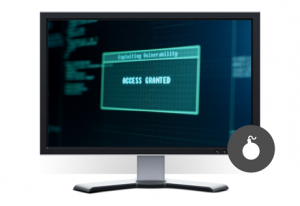Gandalf_The_Grey
Level 85
Thread author
Verified
Honorary Member
Top Poster
Content Creator
Well-known
- Apr 24, 2016
- 7,875
“Advanced persistent threat” is a term commonly used to describe a targeted cyber-attack that employs a complex set of methods and techniques to penetrate information system(s). Different aims of such attacks could be stealing/substituting/damaging confidential information, or establishing sabotage capabilities, the last of which could lead to financial and reputational damage of the targeted organisations. Such attacks are very purposeful, and usually involve highly specialised tools. The tools used are partly free and partly commercial, partly their payloads are based on non-evasive techniques such as using standard Windows APIs, and partly their payloads are based on evasive techniques such as direct syscalls, indirect syscalls, user-mode unhooking, shellcode obfuscation, API hashing, hardware breakpoints, etc.
In our Advanced Threat Protection Test, we use Tactics, Techniques and Procedures (TTPs) that reflect the strategies attackers use to infiltrate a network with malware. These multifaceted attacks can be classified using Lockheed Martin’s Cybersecurity Kill Chain, which divides them into seven distinct phases, each marked by its own unique Indicators of Compromise (IOCs). Our testing approach is heavily influenced by a subset of the TTPs found in the respected MITRE ATT&CK® framework. To reinforce the authenticity and reliability of our findings, a false alarm test is integrated into our report. Our tests are designed to simulate real-world scenarios as closely as possible, using a variety of techniques and resources that mimic the malware found in real-world cyber-attacks. We use system programs designed to evade signature-based detection, while also exploiting the versatility of popular scripting languages such as JavaScript, batch files, PowerShell and Visual Basic scripts. Our tests intricately interweave both staged and non-staged malware samples, cleverly using obfuscation and encryption strategies such as Base64, XOR and AES to disguise malicious code before it executes. We use a range of C2 channels to communicate with the attacker, including HTTP, HTTPS and TCP. In addition, our arsenal includes a variety of well-known exploit frameworks such as the Metasploit Framework, PowerShell Empire and several other commercial tools. This holistic and complex approach ensures that our tests remain at the forefront of cybersecurity evaluation and reflect the ever-evolving threat landscape.
To represent the targeted hosts, we use fully patched 64-bit Windows 10 systems, each with a different AV product installed. In the consumer test, an admin account is targeted, although every POC is executed using only a standard-user account, with medium integrity. Windows User Account Control is enabled and set to the default level in both tests. With regard to vendors whose products were tested in both the Consumer and Enterprise ATP Tests, please note that the products and their settings may differ. Hence, the results of the Consumer Test should not be compared with those of the Enterprise Test. Once the payload is executed by the victim, a Command and Control Channel (C2) to the attacker’s system is opened. For this to happen, a listener has to be running on the attacker’s side. For example, this could be a Metasploit Listener on a Kali Linux system. Using the C2 channel, the attacker has full access to the compromised system. The functionality and stability of this established access is verified in each test-case. If a stable C2 connection is made, the system is considered to be compromised. The test consists of 15 different attacks. It focuses on protection, not on detection, and is carried out entirely manually. Whilst the testing procedure is necessarily complex, we have used a fairly simple description of it in this report.
AV Consumer Main-Test-Series vendors were given the opportunity to opt-out of this test before the test started, which is why not all vendors are included in this test. Some vendors are continuing to perfect their products before joining this advanced test.

Advanced Threat Protection Test 2023 - Consumer
AV-Comparatives' Advanced Threat Protection Test 2023 for Consumer security products released, testing the protection against advanced attacks
 www.av-comparatives.org
www.av-comparatives.org
